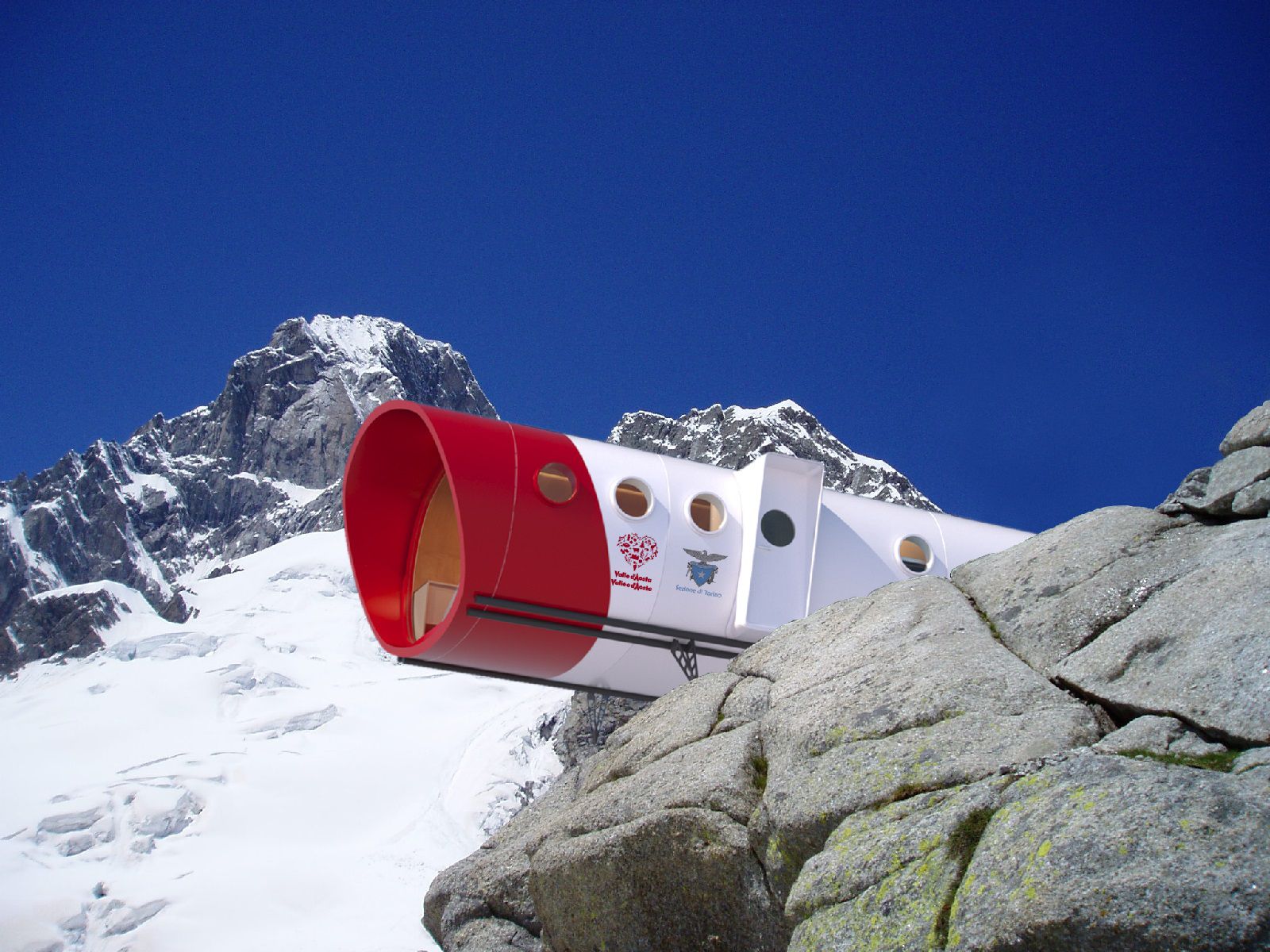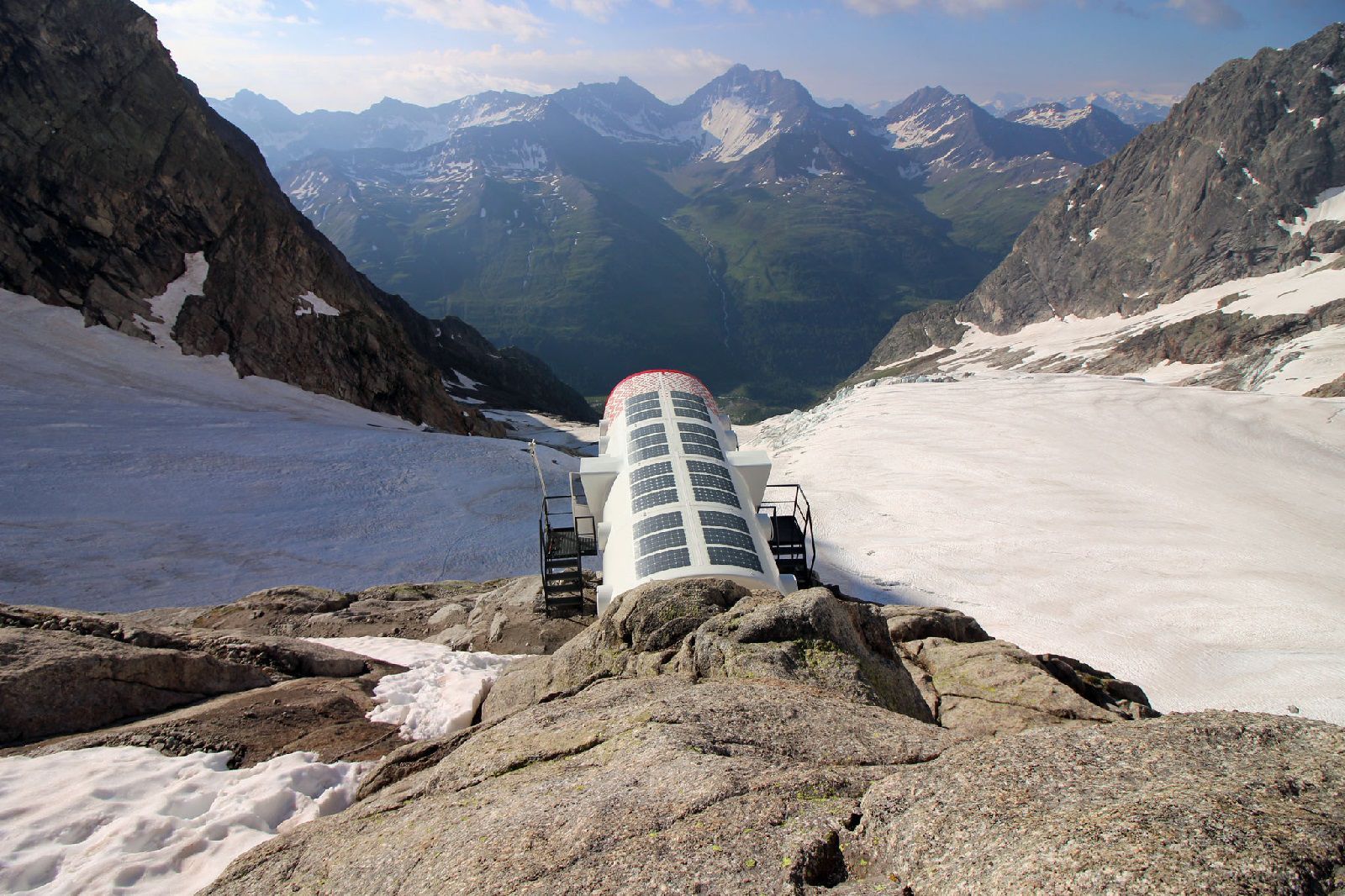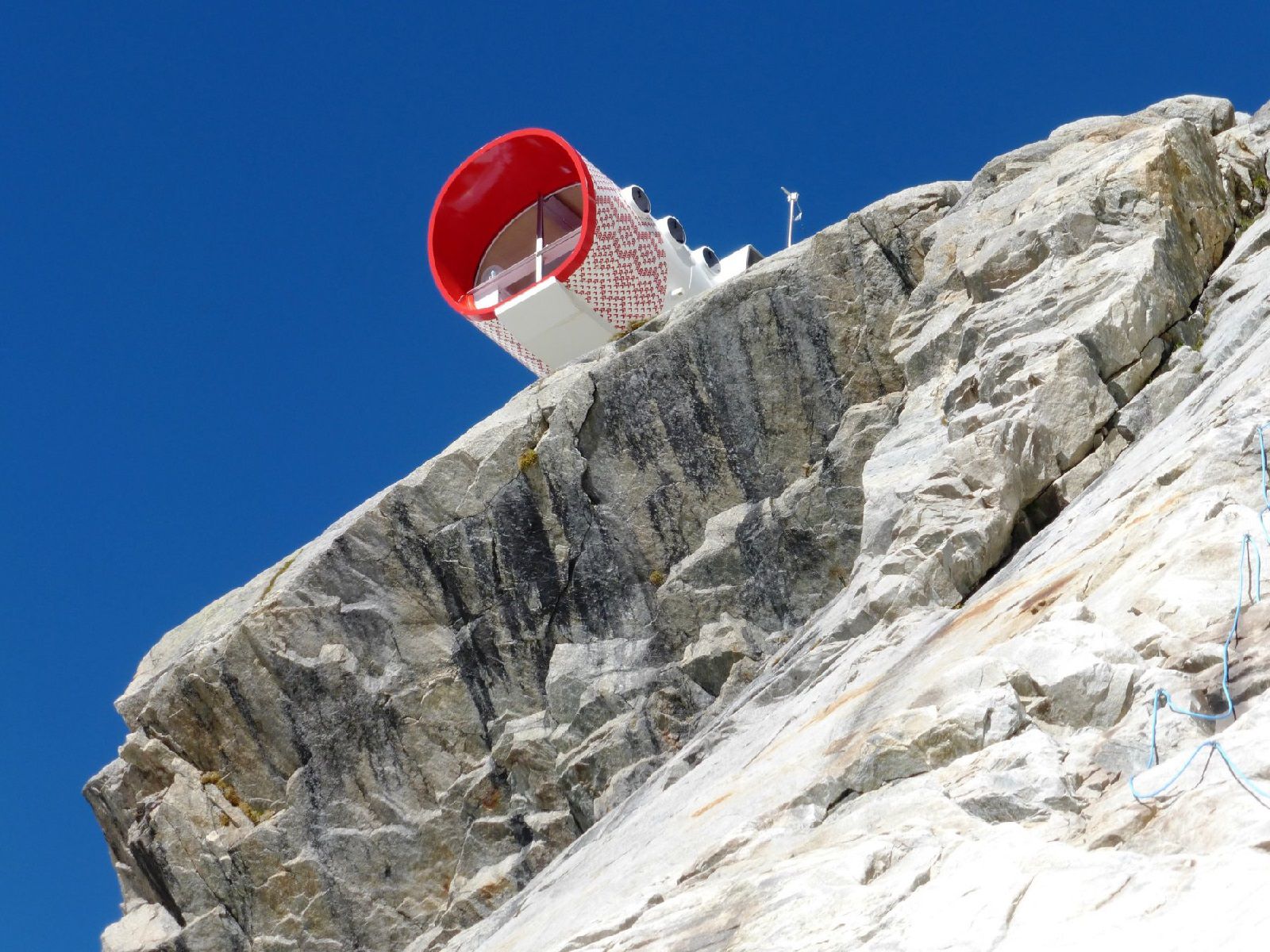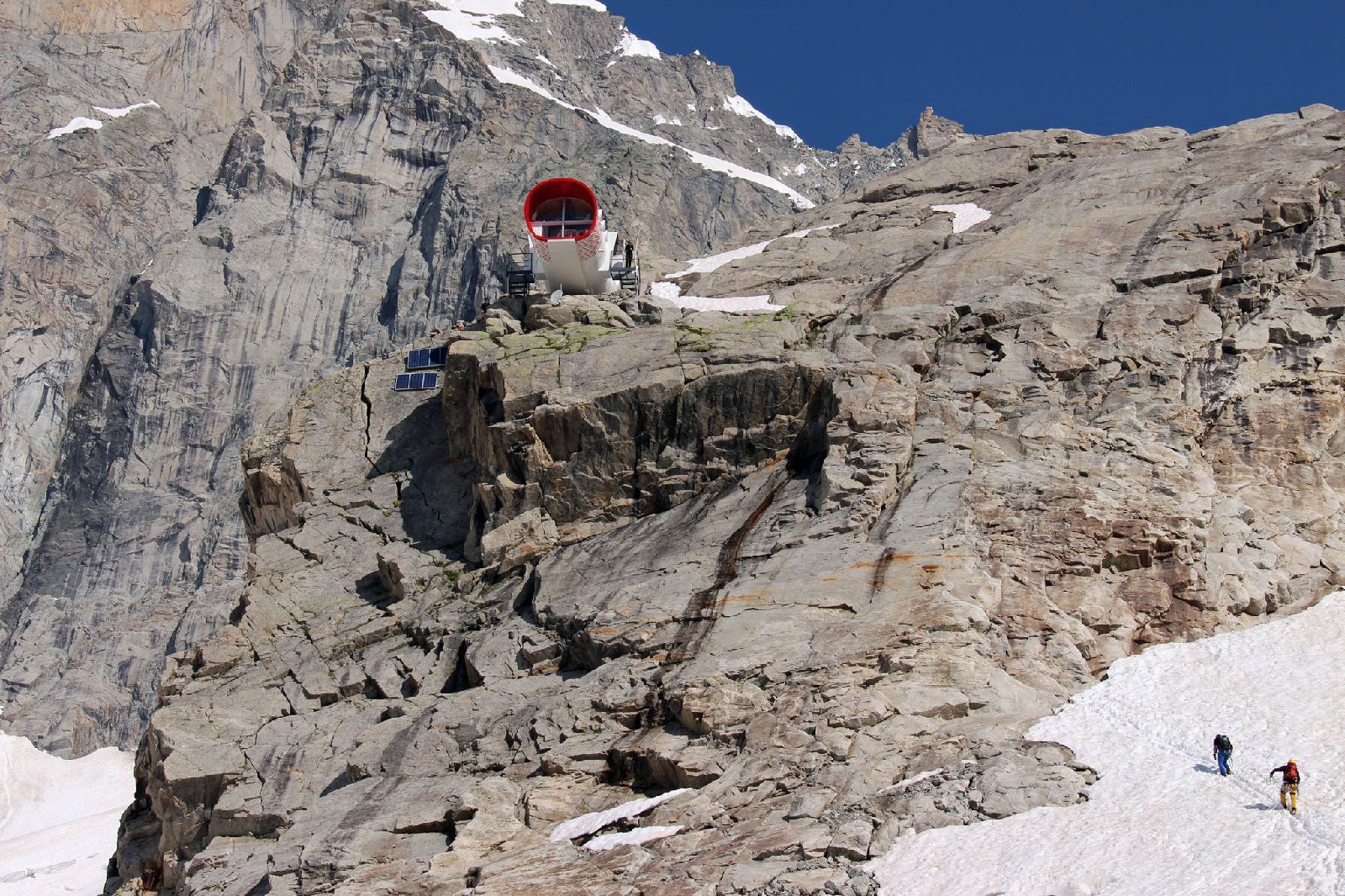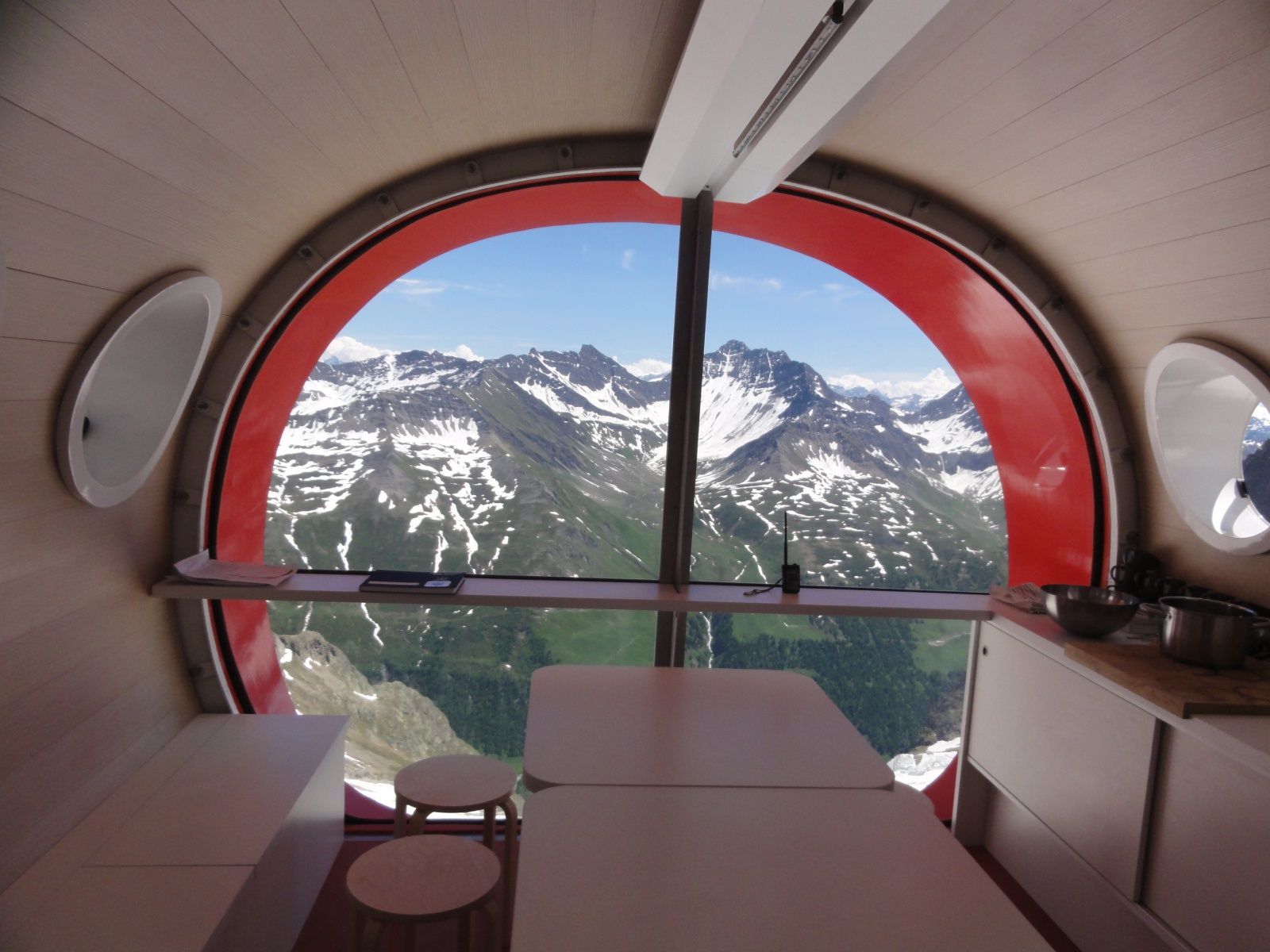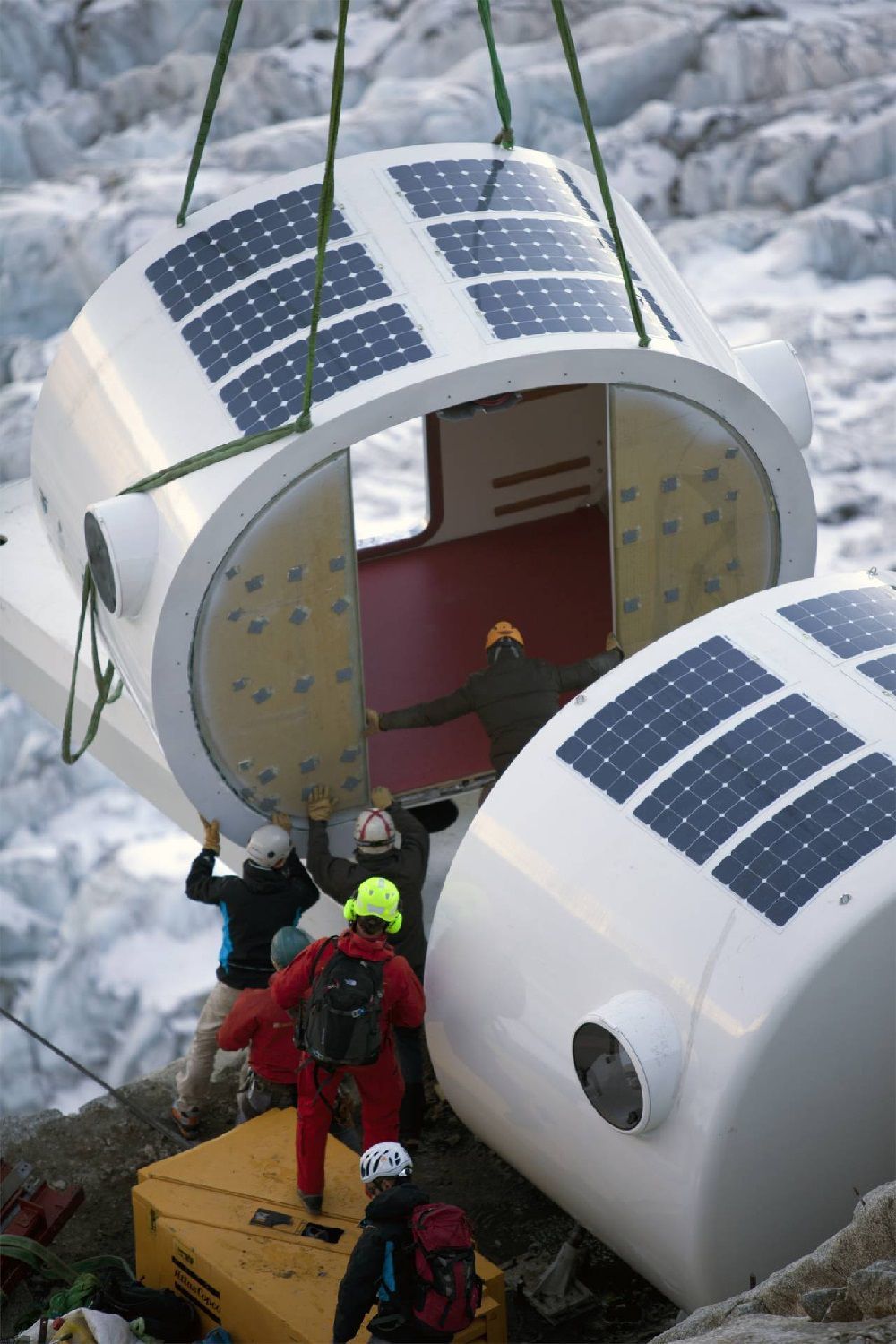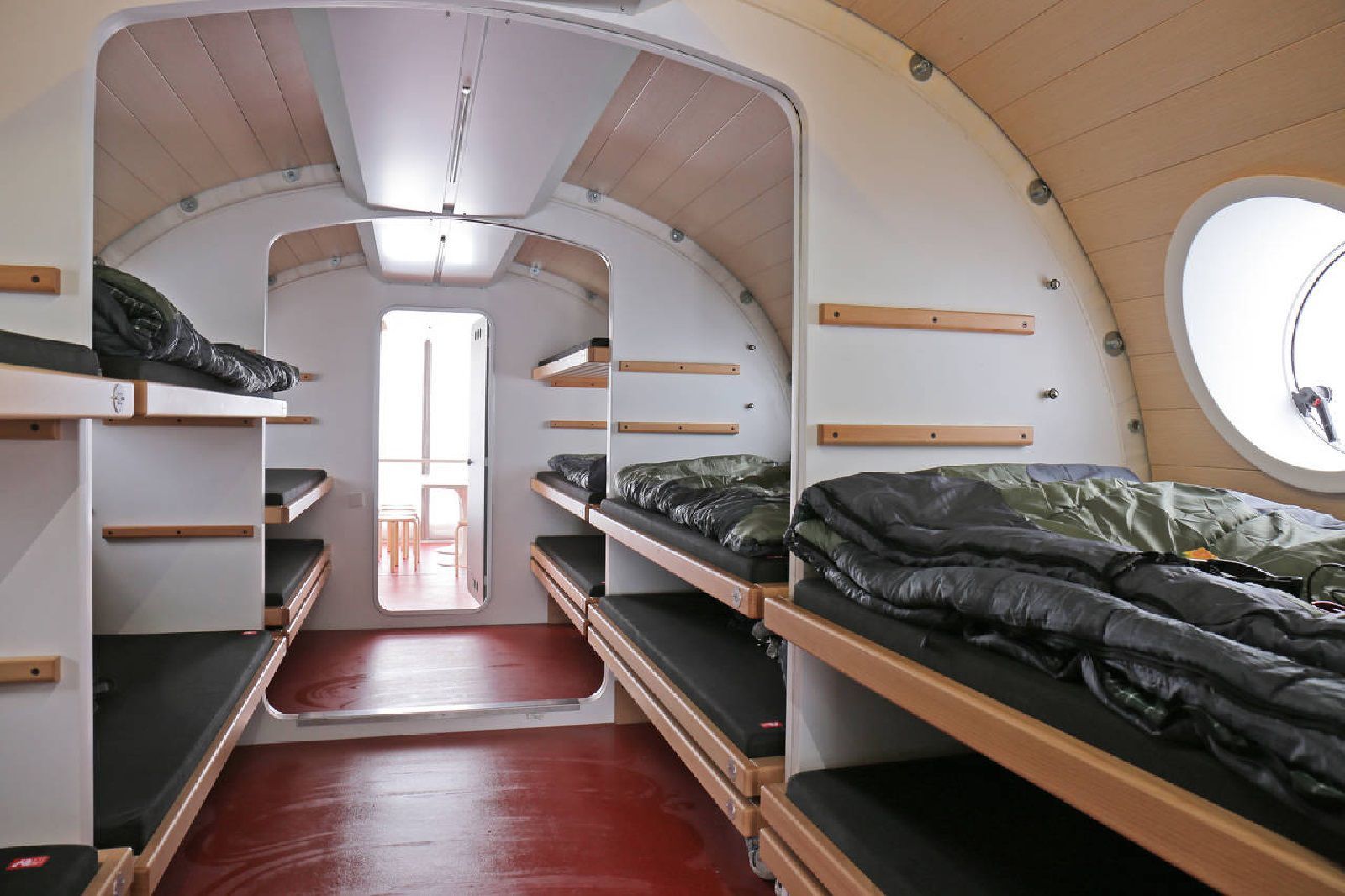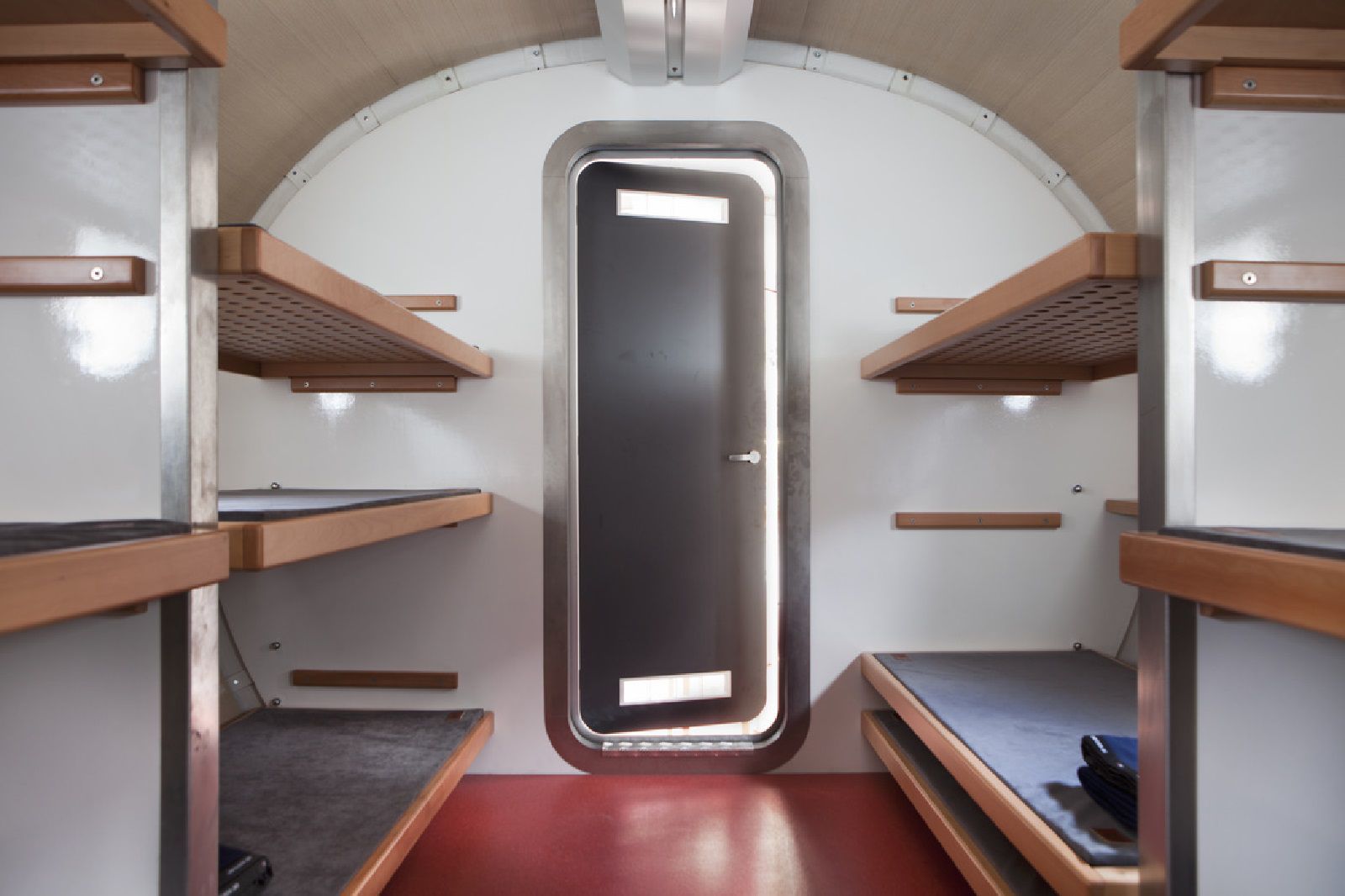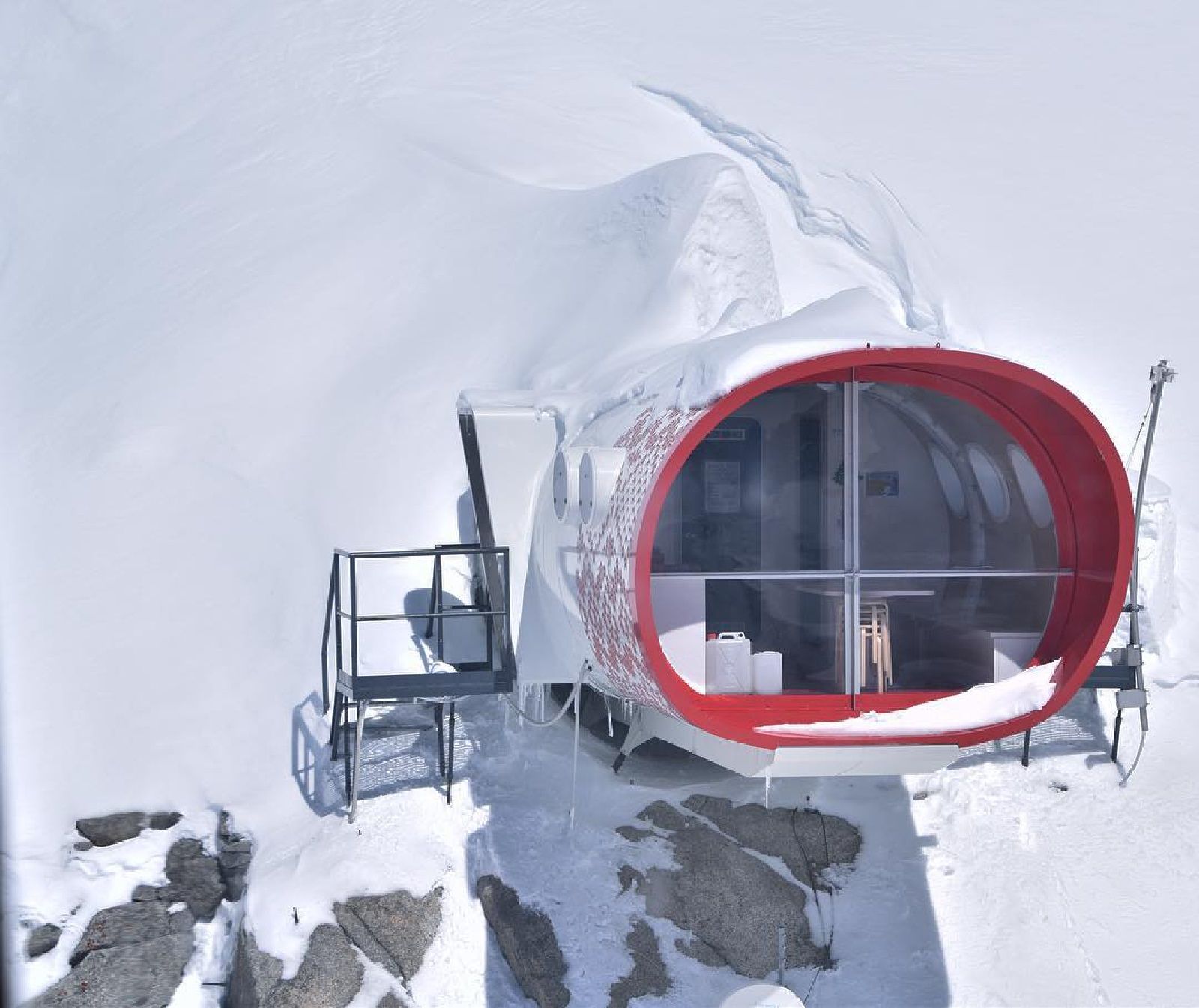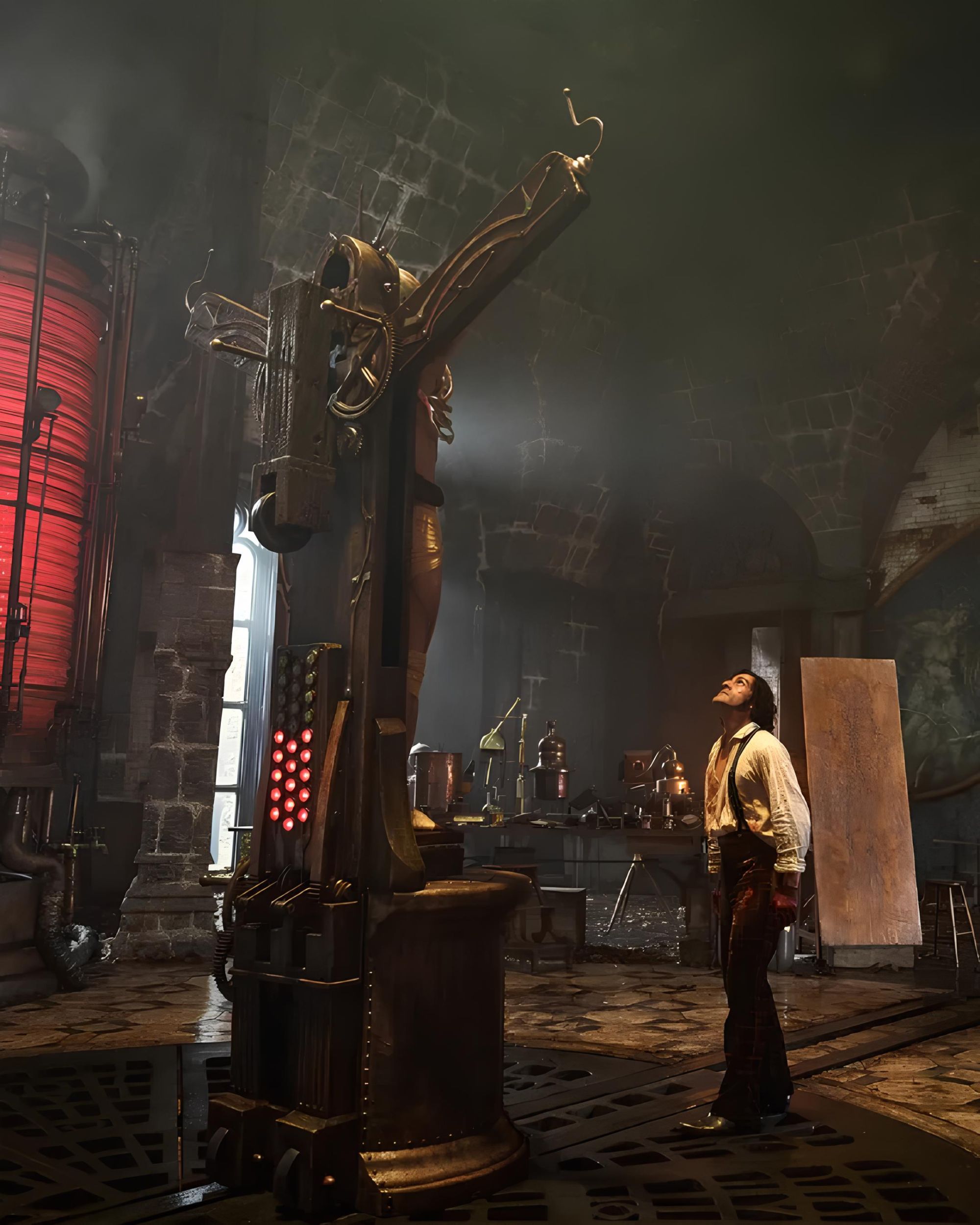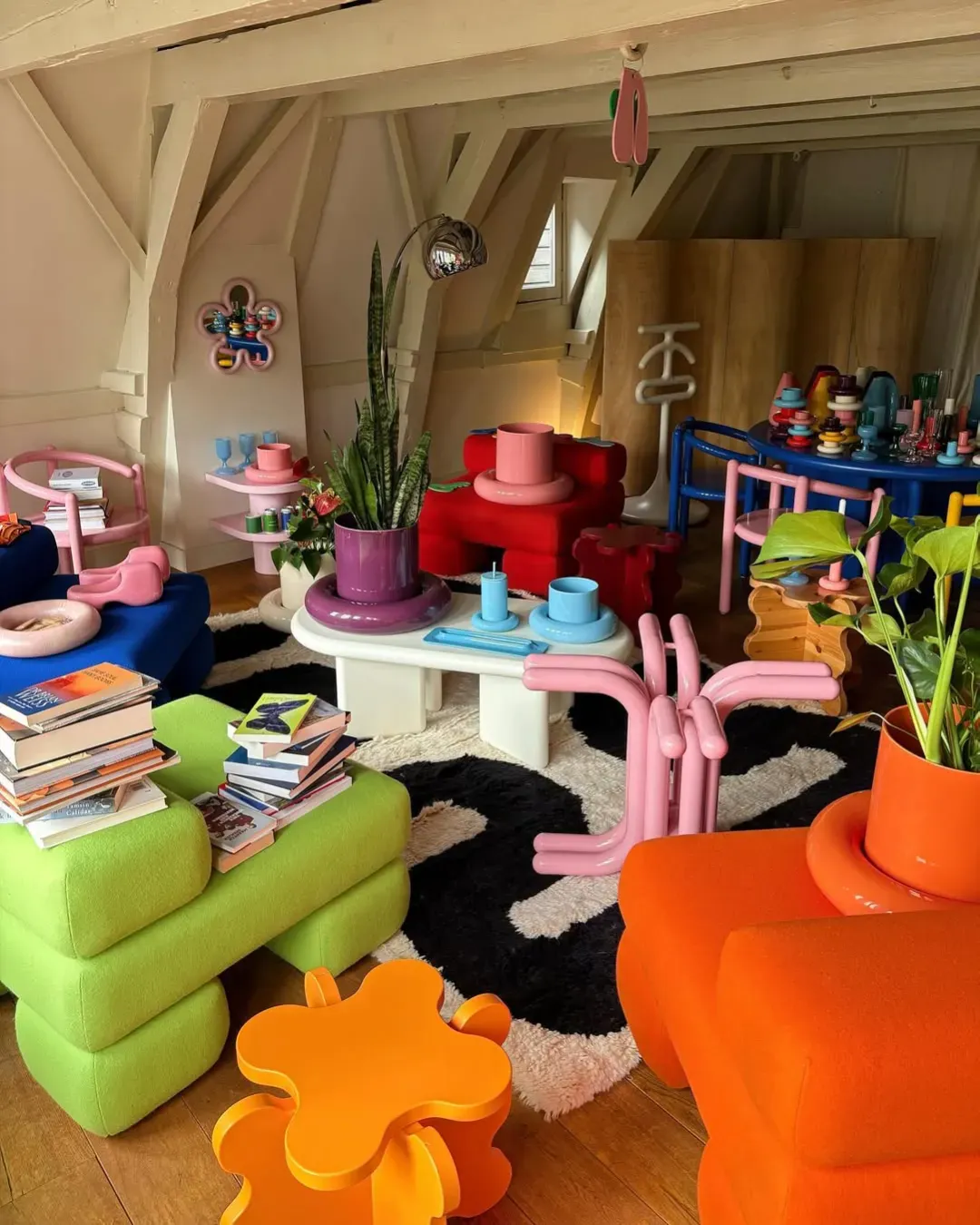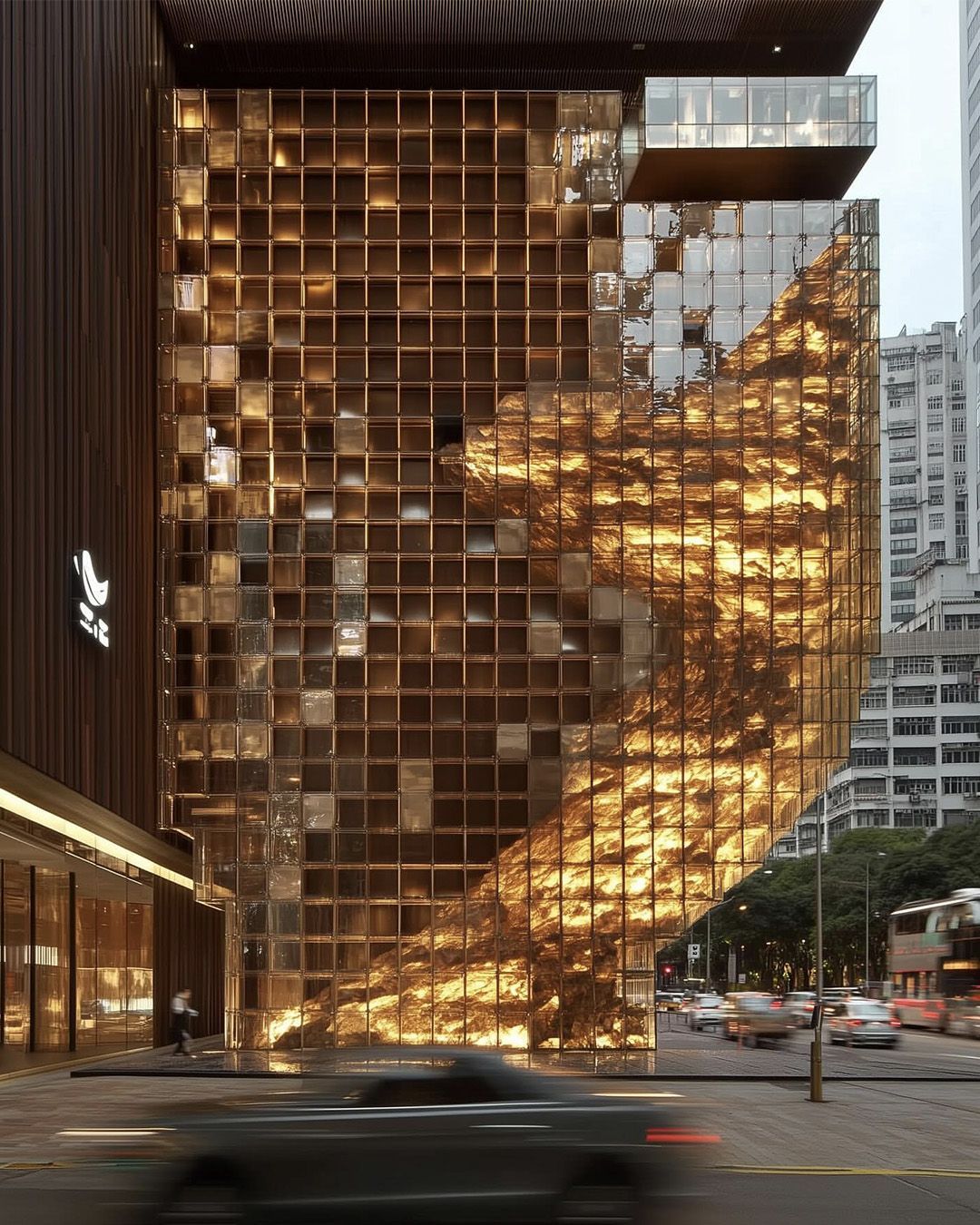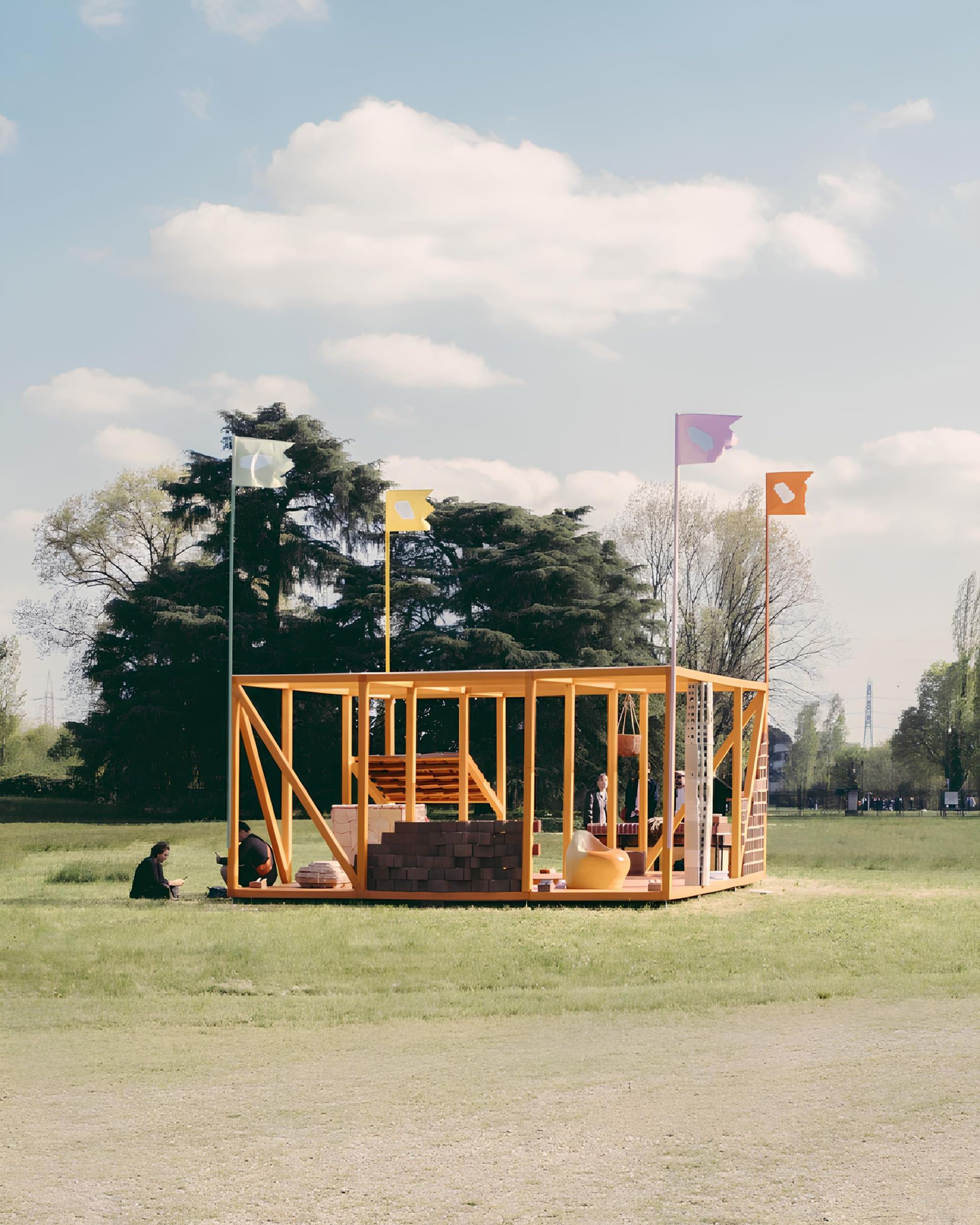
The Bivacco Gervasutti An innovative and eco-sustainable alpine refuge
In the municipality of Courmayeur, at an altitude of 2.835 m on the Freboudze glacier, clinging to the snowy East face of the Grandes Jorasses of Mont Blanc, there is a curious red cylindrical stain with circular portholes that recalls the body of an airplane of line or a spaceship. It is the Bivacco Gervasutti, an innovative and eco-sustainable structure, strongly desired by SUCAI (Subsection Universitaria Club Alpino Italiano) of Turin, which commissioned it, and designed by LEAP (Living Ecological Alpine Pod) Factory with the Turin architects Stefano Testa and Luca Gentilcore. Inaugurated in 2011, replacing the previous classic shelter of 1948, already rebuilt in 1961 in wood and sheet metal, the new version was made of fiberglass sandwich and high-density PVC, composite materials that allowed this 30-meter module squares to have a total weight of just 1,980 kilograms.
This bivouac of the future, powered by state-of-the-art photovoltaic panels, is not only energy self-sufficient, but made to withstand high-altitude conditions. Its shape and its positioning are an engineering masterpiece, the result of sophisticated nautical and aeronautical knowledge borrowed for mountaineering. The entire structure, built in the valley, was in fact transported in a unique solution with the help of a helicopter and hooked to a trapezoidal rail-beam fixed to the rock in six points distributed over half the length. A choice adopted to make it even more stable and able to withstand extreme weather conditions. The Bivacco Gervasutti is an innovative project not only for the extreme synthesis of comfort, safety and eco-sustainability, but also for the fact that its model can be replicated in other situations and environment. The secret is its combinatorial modularity, obtained by combining the base module, 2 meters long, 1-meter sub-modules for any accessories such as portholes or side doors and terminal elements. All optional and interchangeable. It is not surprising, therefore, that a team of Russian architects and engineers have studied the Courmayeur refuge for the construction of a new generation base camp on Mount Elbrus, the highest mountain in Russia.
Fun fact: the bivouac takes its name from the Friulian alpinist Giusto Gervasutti who, in 1942, was the first to reach the then inviolate 6th degree of difficulty climbing the East wall of the Grandes Jorasses chain.










































